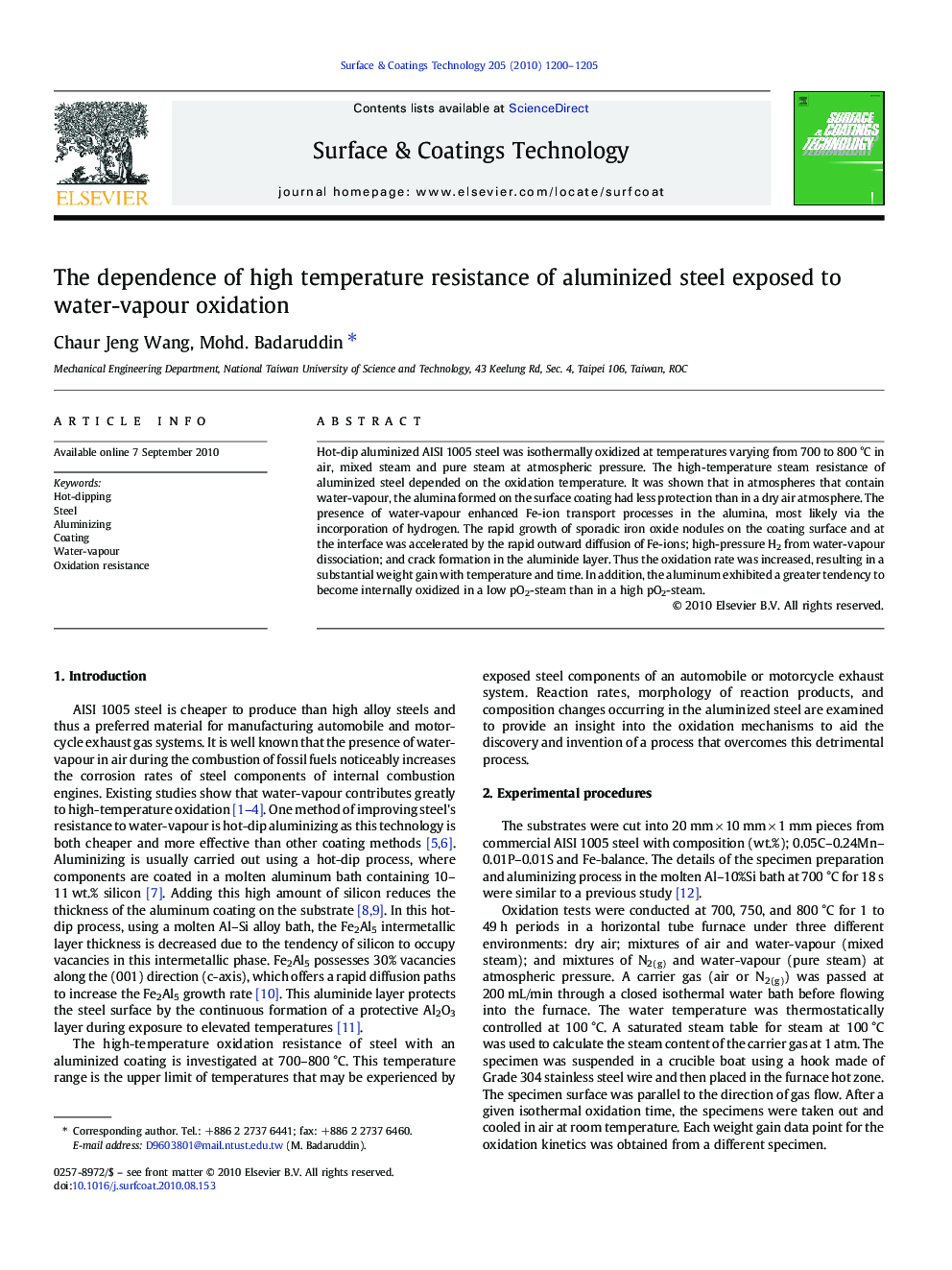| Article ID | Journal | Published Year | Pages | File Type |
|---|---|---|---|---|
| 1658767 | Surface and Coatings Technology | 2010 | 6 Pages |
Hot-dip aluminized AISI 1005 steel was isothermally oxidized at temperatures varying from 700 to 800 °C in air, mixed steam and pure steam at atmospheric pressure. The high-temperature steam resistance of aluminized steel depended on the oxidation temperature. It was shown that in atmospheres that contain water-vapour, the alumina formed on the surface coating had less protection than in a dry air atmosphere. The presence of water-vapour enhanced Fe-ion transport processes in the alumina, most likely via the incorporation of hydrogen. The rapid growth of sporadic iron oxide nodules on the coating surface and at the interface was accelerated by the rapid outward diffusion of Fe-ions; high-pressure H2 from water-vapour dissociation; and crack formation in the aluminide layer. Thus the oxidation rate was increased, resulting in a substantial weight gain with temperature and time. In addition, the aluminum exhibited a greater tendency to become internally oxidized in a low pO2-steam than in a high pO2-steam.
